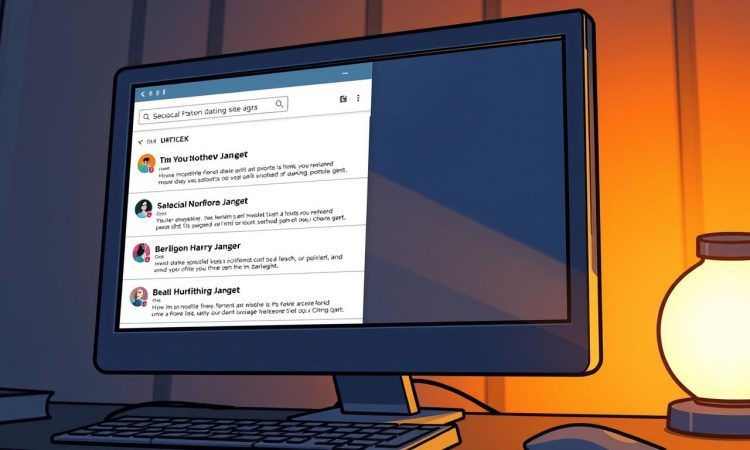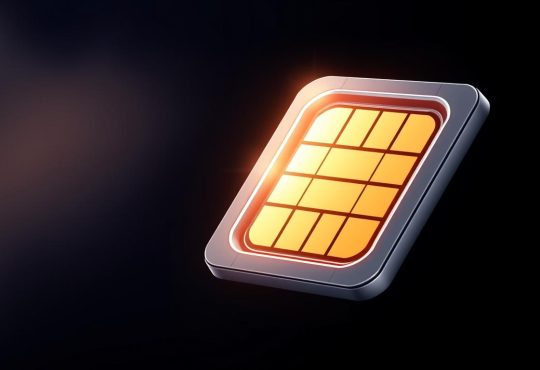
Have you ever opened your partner’s inbox and stumbled upon an email from a dating site? It’s a moment that can spark confusion, doubt, and even fear. But before jumping to conclusions, it’s important to understand that not every email from these platforms means something suspicious.
Emails from dating sites can land in anyone’s inbox for various reasons. Sometimes, it’s a result of spam algorithms or an old account that was never deleted. Other times, it could be a simple case of miscommunication or even a phishing attempt. Experts like Raffi Bilek emphasize that spying isn’t the solution—open communication is key.
In this article, we’ll explore the top five reasons why these emails appear. From legitimate account activity to unintended spam, we’ll break down the possibilities. Our goal is to provide clarity and practical insights, helping you navigate this situation with confidence and trust.
On this Page:
- 1 Understanding Why Does My Husband Get Emails from Dating Sites?
- 2 Unraveling the Top 5 Reasons Behind Dating Site Emails
- 3 Examining Inactive Accounts and Unsubscribed Newsletters
- 4 Data Sharing, Malware, and Fake Notifications: Hidden Culprits
- 5 Spotting Behavioral Red Flags and Constructive Communication
- 6 Conclusion
Understanding Why Does My Husband Get Emails from Dating Sites?
Discovering an unexpected email from a dating platform can raise questions. It’s natural to wonder what it means and how it ended up in the inbox. Before jumping to conclusions, it’s helpful to understand the difference between legitimate notifications and unsolicited spam.
Email Notifications vs. Unsolicited Spam
Legitimate notifications from dating sites often include alerts for new matches or messages. These are sent to users who have active accounts. On the other hand, spam emails are unsolicited and may appear even if the recipient never signed up for the service.
Many spam emails are generated from data breaches or sold user information. Studies show that 70% of spam emails originate from these sources. This means an email address could end up on a mailing list without the user’s knowledge.
Misinterpreting Online Communications
It’s easy to misinterpret these emails as signs of secretive behavior. However, many are routine and don’t indicate active use of a dating site. For example, an old account that was never deleted might still send notifications.
Email filtering can also play a role. Some messages are mistakenly marked as important instead of being sent to the spam folder. Understanding these technical aspects can help reduce unnecessary concerns.
Open communication is key. Instead of assuming the worst, discussing the situation can provide clarity and strengthen trust in the relationship.
Unraveling the Top 5 Reasons Behind Dating Site Emails
Receiving a notification from a dating platform can feel unsettling. Many people wonder how these messages end up in their inbox. Let’s explore the top reasons behind these emails, from active accounts to unintended spam.
Legitimate Dating Account Activity
An active account on a dating site often generates regular notifications. These messages are designed to engage users and encourage interaction. If someone is actively using the platform, they’ll receive alerts for new matches or messages.
It’s important to note that these notifications don’t always indicate secretive behavior. Many people use dating sites for networking or socializing, not just romantic connections.
Past Registrations and Account Oversights
Sometimes, an old account that was never deleted can still send emails. Users may forget about past registrations, especially if they signed up years ago. These accounts might remain active, leading to occasional notifications.
Email filtering systems can also misplace these messages. Instead of going to the spam folder, they might appear in the primary inbox, causing confusion.
Random Spam from Public Email Databases
Spammers often obtain email addresses from public databases or data breaches. This information is then used to send unsolicited messages. Even if someone never signed up for a dating site, their email could end up on a mailing list.
These spam emails are usually random and don’t reflect actual activity on the platform. Understanding this can help reduce unnecessary concerns.
Examining Inactive Accounts and Unsubscribed Newsletters
Inactive accounts and forgotten profiles can often lead to unexpected email notifications. Many dating platforms maintain profiles even after users stop engaging. This can result in emails that seem out of place, especially if the account was created years ago.
The Persistence of Old Dating Profiles
Old profiles are a common source of unwanted emails. Users may forget about accounts they created for a brief period. These profiles often remain active, sending notifications long after they’ve been abandoned.
Dating sites sometimes retain information to keep their user base active. This practice can lead to emails about matches or updates, even if the account hasn’t been used in years. Regularly checking and deleting old profiles can help avoid this issue.
Unsubscribing from newsletters can be tricky. Some platforms make it difficult to opt out, requiring multiple steps or account access. This can lead to continued emails, even after attempts to unsubscribe.
Spam filters don’t always catch these messages. Instead, they may land in the primary inbox, causing confusion. Marking unwanted emails as spam can help improve filter accuracy over time.
Proactive account maintenance is key. Deleting old profiles and unsubscribing from newsletters can reduce unnecessary notifications. Taking these steps ensures a cleaner inbox and fewer surprises.
Data Sharing, Malware, and Fake Notifications: Hidden Culprits
Sometimes, the reasons behind unexpected emails are more complex than they seem. Beyond spam and old accounts, hidden factors like data sharing and malware can play a role. Understanding these issues can help clarify why certain messages appear in your inbox.
Third-Party Data Sharing Concerns
Many companies share user information with third parties, often without explicit consent. This practice can lead to your email address ending up on marketing or spam lists. Even if you’ve never signed up for a dating site, your data might be sold or leaked, resulting in unsolicited emails.
Data breaches are another common source of this issue. When platforms are hacked, user details can be exposed and used for spam campaigns. Protecting your privacy by limiting data sharing and using secure platforms can reduce these risks.
Malware Infections Leading to Spam Emails
Malware infections can also trigger unusual email notifications. Some malicious programs mimic dating site emails to trick users into clicking on harmful links. These fake notifications are designed to steal personal information or spread further malware.
If your device is infected, you might notice an increase in spam emails, including those from dating platforms. Running regular malware scans and keeping your software updated can help prevent these issues. Avoid clicking on suspicious links to protect your information.
By understanding these hidden culprits, you can better navigate the complexities of unexpected emails. Taking proactive steps to secure your data and devices ensures a safer online experience.
Spotting Behavioral Red Flags and Constructive Communication
Noticing unusual behavior in a relationship can be concerning, especially when it involves online activity. While emails from a dating site might raise questions, it’s important to approach the situation with clarity and understanding. Open communication is key to addressing concerns without jumping to conclusions.
Identifying Secretive Behaviors in Relationships
Certain behaviors can indicate secretive online activity. For example, unusual phone usage or deleted browsing history might raise suspicions. Defensive reactions when asked about these actions can also be a red flag.
It’s essential to look for patterns rather than isolated incidents. Repeated secretive behavior may warrant a deeper conversation. Tools like Swindlerbuster can help verify concerns without invading privacy.
Tips for Approaching Sensitive Conversations
When discussing sensitive topics, focus on open and honest communication. Avoid accusatory language and instead express your feelings calmly. For example, say, “I noticed this and felt concerned,” rather than, “You’re hiding something.”
Fact-checking is crucial before making assumptions. Simple online searches can clarify whether an email is spam or linked to an active account. This approach helps avoid misunderstandings and builds trust.
Remember, the goal is to strengthen the relationship, not create conflict. By addressing concerns constructively, you can foster a deeper connection and mutual understanding.
Conclusion
Understanding the reasons behind unexpected emails can bring clarity and peace of mind. While finding a message from a dating site might feel alarming, it often has simple explanations. Spam, old accounts, or data breaches are common culprits.
Open communication is essential. Discussing concerns calmly can strengthen trust and resolve misunderstandings. Differentiating between genuine notifications and spam is key to avoiding unnecessary worry.
Proactive steps like managing accounts and enhancing digital security can reduce unwanted emails. Regularly updating passwords and using spam filters can help maintain a clean inbox.
By staying informed and fostering honest dialogue, you can navigate these situations with confidence. Trust and understanding are the foundation of any strong relationship.










